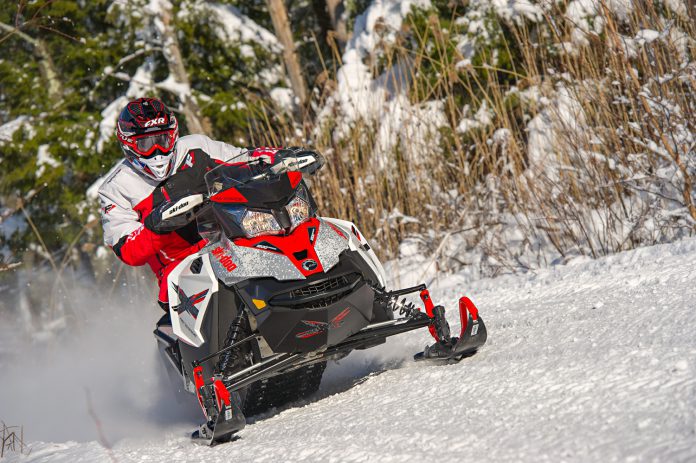For about 15 years now, the snowmobile world has been obsessed with the weight of sleds.
Every OEM has spent a fortune on paring down mass and the advertised weights of sleds have been a huge selling factor. In particular, Ski-Doo and Polaris have been comparing notes the last years to obtain bragging rights for who is the lightest.
As a matter of fact, if you talk to some Polaris people they profess this is the biggest argument for not offering 4-stroke sleds. In their view, snowmobiles work best in all forms of snow when they are as light as possible. Mixing in a 4-stroke defeats that credo and adds “unnecessary” weight at the front of the sled.
We agree with that argument but it’s super-difficult to ignore the popularity and customer satisfaction of 4-stroke sleds.
If you look at Ski-Doo’s sales, the company’s 4-strokes account for a very large portion of its industry-leading sales.
Certainly, Ski-Doo has gone to great lengths to offer the lightest possible 4-stroke engines and platforms – and they’re obviously winning, laying claim to being the largest purveyor of 4-stroke sleds in the business.
We’re interested in what buyers are thinking, however.
With the large selection of 4-strokes offered by Arctic Cat, Yamaha and Ski-Doo, more and more buyers are shunning the drive to buy a much lighter 2-stroke and are opting for a much heavier 4-stroke.
Certainly the success of the turbocharged SideWinder and 9000 are converting 2-stroke customers but there are some riders who are absolutely in love with their Yamaha and Cat 1049cc triple powered sleds and their ACE and 4-TEC rides.
Are we saying the 2-stroke is diminishing? Never! What we’re seeing, however, is with trail sleds, less priority being put on weight and a gradual migration to 4-strokes.








